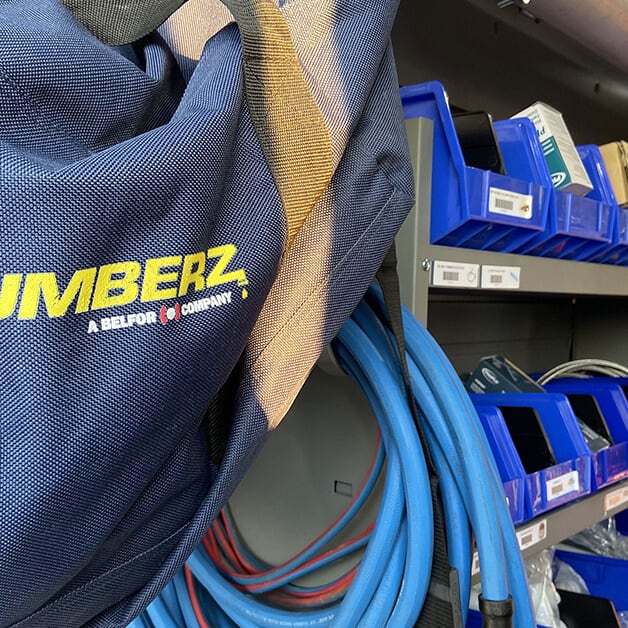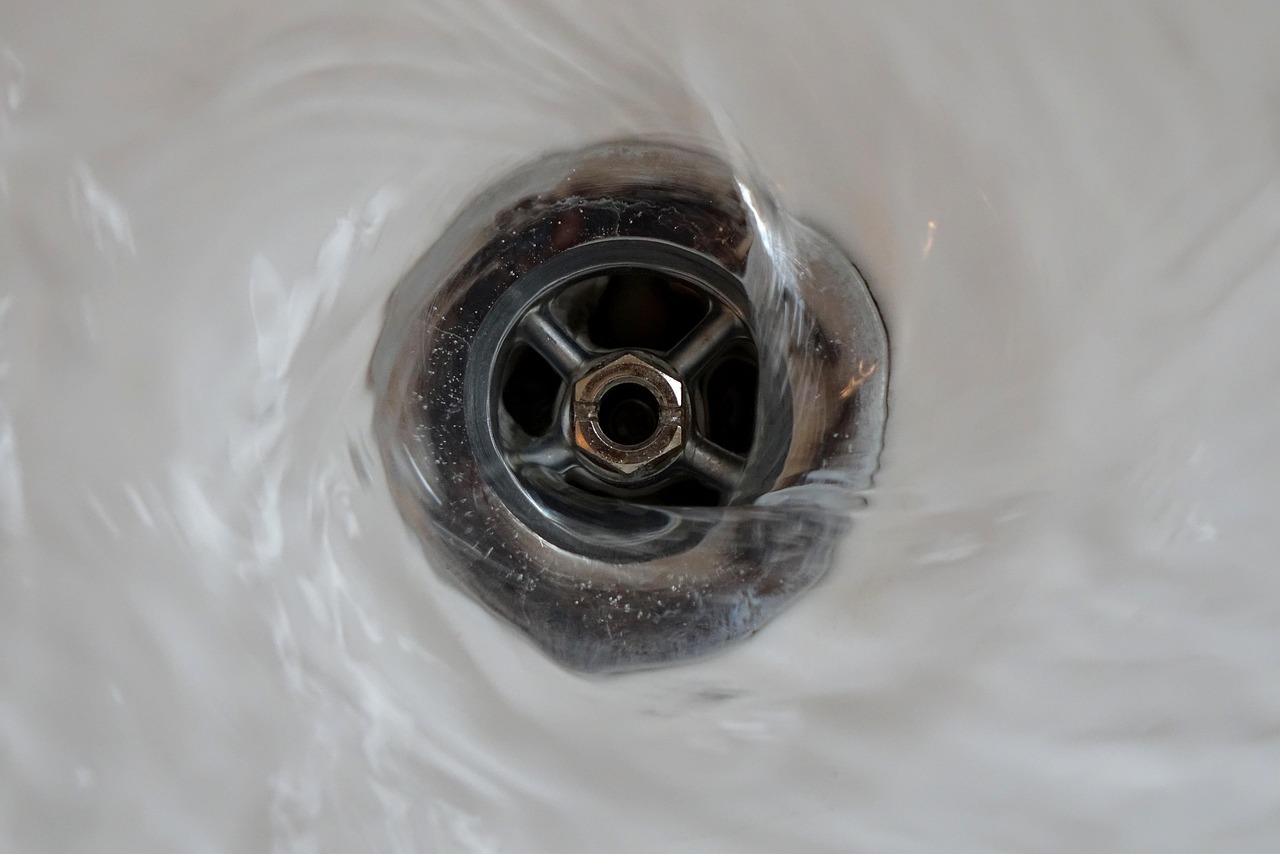Iron In Water
-
After water “hardness”, iron in water is the next most common water problem.

Homeowners and businesses with well water deal with, sometimes iron water problems are also found with city water. Iron in water is difficult to treat, mainly because iron can be found in water in several chemical forms, each form may require a different water treatment method for removal or control of the iron. Factors like pH level can also have a major effect on how successful an iron treatment may be. Z PLUMBERZ always starts with a water test; we take your water and send it to our test lab for an analysis. Once we know the “state” of your water, recommending the best iron removal or management system is fairly straightforward.
Different Iron Types That Occur in Water
Iron is typically present in water in three common forms. While there are other forms of iron in water, they are typically much less common than the three listed below:
- Bacterial Iron in Well Water – Iron bacteria is usually identified by slime in places such as toilet reservoirs or by the presence of a slimy mass fouling softeners or filters.
- Ferric Iron in Well Water – Also known as red water iron, ferric iron in well water is essentially clear water iron that has been exposed to oxygen usually from the air, thereby oxidizing. Carbon dioxide leaves the water and the oxygen combines with the iron to form ferric ions (Fe+++). This gives the water a red rust coloring.
- Ferrous Iron in Well Water – Often called clear-water iron because it is clear when poured, this substance is found in water that contains no oxygen. Typically, it comes from deeper wells and groundwater sources. Carbon dioxide acts on iron in the ground to form soluble ferrous bicarbonate. In water this forms ferrous ions (Fe++).
Treatment Methods For Iron in Water At 5 to 6 ppm
- Bacteria Iron in Well Water – Iron bacteria can be controlled by periodic well chlorination or it can be treated in the house. The treatment occurs as follows: Chlorination, retention, filtration. Activated carbon is usually used as the filter material so the excess chlorine can also be removed.
- Ferric Iron in Well Water – Conceptually, dealing with ferric iron is simple: just filter it from the water using a properly sized filter. In practice, however, there are two additional issues: Some iron can exist in colloidal form. While ferric iron will usually stick together to form large flakes, the small particles of colloidal iron do the opposite. Because they have large surface charges, the smaller they are, the larger their surface area and charge relative to their mass. The charges in the different particles repel each other and will not coagulate. Their small size makes them hard to filter. When this happens, it may be necessary to add a coagulant to the water to stick the particles together, making them easier to filter. In most waters containing ferric iron there will also be iron in solution in the water, which needs removing. To check this, use a membrane filter, preferably .22 micron, to filter out the insoluble iron and then test the water. This adds complexity to the removal of the ferric iron since some of the methods for removing ferrous iron will remove ferric iron as well.
- Ferrous Iron in Well Water – There are a variety of ways for removing ferrous iron, each with its own unique set of strengths and limitations.
- Ion Exchange For Well Water Treatment of Iron – Ion exchange relies on the ability of softening resin to attract iron ions as well as hardness ions like calcium and magnesium. The ions of ferrous iron are cations like calcium and magnesium ions that a standard water softener is designed to remove. The strong acid cation resins can select the ferrous ions over calcium and magnesium ions. Removing ferrous iron in a softener can be an effective and economical way of treating iron problems. However, there are limitations: The amount of iron that can be removed is limited. There are reports of up to 50 parts of iron being removed by ion exchange, but for practical purposes in an everyday working softener, the upper limit is around 5 to 7 parts per million. The unit needs to be specially designed if more than a couple parts per million of iron are in the water. Because the resin so strongly selects for the iron, it is harder for the sodium regenerant to knock the iron off the resin. It is important to have an effective backwash to clean the resin and prevent channeling. An under-bed and perhaps even a turbulator will assist in this. Any ferric iron in the water will foul the resin. Unlike iron oxidized by air that forms the familiar dry rust, ferrous iron oxidized in water first forms ferric ions (Fe+++). These in turn combine with free hydroxyl ions in the well water to produce ferric hydroxide, which will pass straight through the softener and into service and cause staining. Even worse, ferric hydroxide is a sticky gelatinous substance that will clog the resin and coat it when coagulated. Over time, the softener ceases to function effectively on either iron or hardness. At higher pH levels the softener will be ineffective. At low pH levels it is hard to precipitate iron from water. In fact, with pH as low as In contrast, when the pH is above neutral it is much harder to keep the iron in the water dissolved. When the water’s pH rises above 7.2 to 7.3, the softener s ability to grab iron from the water becomes increasingly limited. Despite these limitations, softeners perform well in removing small quantities of clear water iron. Using an agent to clean the resin whether as a separate product or formulated in the salt used for regeneration will dissolve any iron sticking to the resin.
Treatment Methods For Iron in Water Above 5 to 6 ppm
Where the concentration of iron is above 5 or 6 parts per million, or when there is both dissolved and precipitated iron in the water, different approaches may be needed:
- Oxidation Additives Plus Filtration For Well Water Iron Removal – Oxidation methods convert soluble iron into insoluble iron and then filter the insoluble iron. In turn, these methods fall into two groups: those using additives like chlorine, ozone or air; or those using an oxidizing filter media. All means of removing iron by oxidation work in the same way – they turn soluble ferrous iron into insoluble ferric iron and filter it out. The filter will also pick up any ferric iron that was originally in the water.
- Ozonation for Well Water Treatment of Iron – An ozone generator is used to make ozone that is then fed by pump or by an air injector into the water stream to convert ferrous iron into ferric iron. Ozone has the greatest oxidizing potential of the common oxidizers. This is followed by a contact time tank and then by a catalytic medium or an inert multilayered filter for removal of the ferric iron.
- Chlorination of Well Water for Iron Removal – Chlorine can be introduced into water in one of several forms: a gas; as calcium hypochlorite; or commonly, as sodium hypochlorite. The treated water is then held in a retention tank where the iron precipitates out and is then removed by filtering with manganese greensand, anthracite/greensand or activated carbon. The Greensand is then regenerated by using potassium permanganate. If applied this way, a dosage of one part of chlorine to each part of iron is used and 0.2 parts of potassium permanganate per part of iron is fed into the water downstream of the chlorine. The potassium permanganate and any chlorine residual serve to continuously regenerate the greensand. For very high levels of iron, chlorination with continuous regeneration is the only practical approach.
- Aeration of Well Water to Aid In Iron Removal – Air is also used to convert dissolved iron into a form that can be filtered. This approach mimics what happens when untreated dissolved iron comes into contact with the air after leaving a faucet. Aeration methods can be of a two-tank or a single-tank variety. In a two-tank system, air is introduced into the first tank using a pump or other injection device. The dissolved iron precipitates in the first tank and is carried into the second tank where it is filtered by a multi-media filter. One drawback to this system is that water bearing the precipitated iron goes through the head of the first unit and the piping between the units. Particularly at lower flow rates, the sticky ferrous hydroxide tends to foul the valve on the first unit and may require cleaning every 6-24 months. A single-tank system essentially combines the two tanks of a single tank system into one. The iron is oxidized at the top of the tank before falling into the filter medium at the bottom. There is no potential fouling of the head. The iron is filtered before it goes through the outlet port of the valve.
We are fully licensed and insured for all of your plumbing, water, sewer and drain needs. Our technicians are clean-cut, polite, friendly, arrive on-time and are background and drug tested for your peace of mind. We operate 24 hours a day, 7 days a week and we never charge extra for nights, weekends or holidays…EVER! For all of our work you are assured of option pricing; you will know the repair options we suggest and the price of each option BEFORE we do any work. You pick and approve the option you like best, only then do we do the work.
-
Request A Quote Or Service Today


